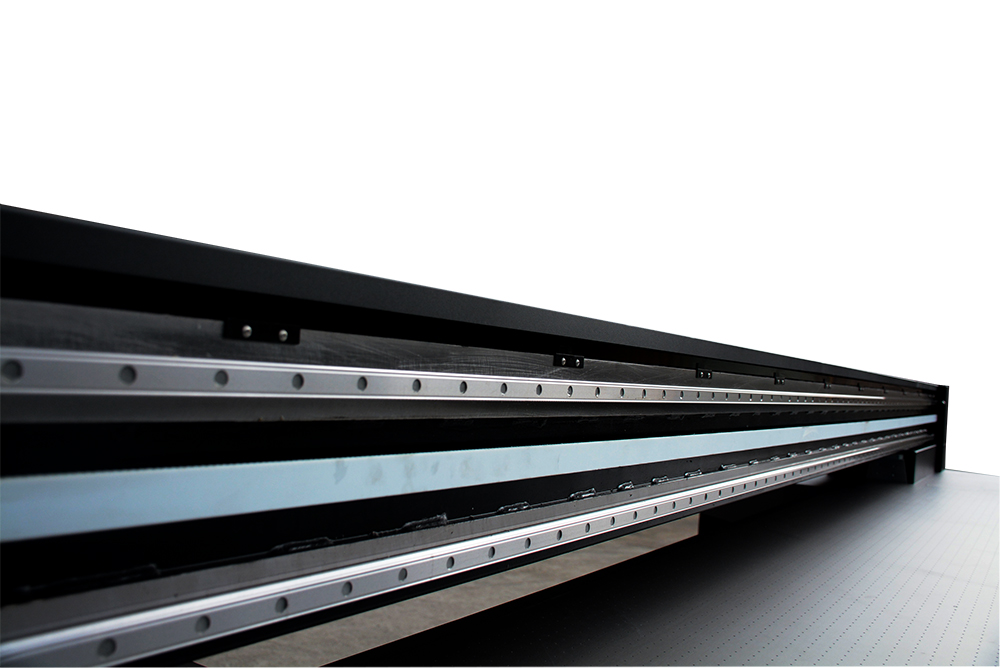How to Troubleshoot Ink Supply Issues in UV Flatbed Printers
UV flatbed printers have revolutionized the printing industry with their ability to produce high-quality, durable prints on a wide range of substrates. However, like any sophisticated piece of machinery, they are not immune to issues, particularly those related to ink supply. Ink supply problems can disrupt printing processes, compromise print quality, and lead to costly downtime. To ensure smooth operation and maintain optimal print output, it’s essential to understand how to troubleshoot these issues effectively. This article provides a comprehensive guide to diagnosing and resolving ink supply problems in UV flatbed printers.

Understanding the Ink Supply System
Before diving into troubleshooting, it’s crucial to have a basic understanding of the ink supply system in UV flatbed printers. These printers typically use a closed ink circulation system, which includes ink cartridges or tanks, ink lines, pumps, and a series of valves and filters. The ink is circulated continuously to prevent settling and to maintain a consistent ink flow to the print heads.
The UV-curing process further complicates matters, as the ink must be specially formulated to cure quickly and effectively under ultraviolet light. This means that any issue with the ink supply can directly impact the curing process and, consequently, the final print quality.
Common Ink Supply Issues
Several common problems can arise with the ink supply system in UV flatbed printers:
Ink Flow Problems: This can manifest as inconsistent ink delivery, leading to streaking, banding, or complete print head clogging.
Air Bubbles in the Ink Lines: Air bubbles can disrupt the ink flow, causing print defects and potentially damaging the print heads.
Ink Leakage: Leaks can occur at various points in the system, from cartridges to ink lines and connections.
Clogged Filters or Nozzles: Over time, ink residue and debris can accumulate, clogging filters and nozzles.
Ink Degradation: UV inks can degrade if exposed to improper storage conditions or if left stagnant for too long.
Troubleshooting Steps
To effectively troubleshoot ink supply issues, follow these systematic steps:
1. Visual Inspection
Start with a thorough visual inspection of the entire ink supply system. Look for:
Leaks: Check all connections, hoses, and cartridges for signs of ink leakage.
Air Bubbles: Observe the ink lines for air bubbles, which may indicate a leak or improper priming.
Clogs: Inspect the print heads and nozzles for any visible clogs or debris.
2. Check Ink Levels and Cartridges
Ensure that all ink cartridges or tanks are properly seated and contain adequate ink levels. Low ink levels can cause flow issues and compromise print quality. If cartridges are nearly empty, replace them with new ones, following the manufacturer’s guidelines.
3. Prime the Ink System
Priming the ink system helps remove air bubbles and ensures a steady flow of ink to the print heads. Refer to your printer’s manual for specific instructions on how to prime the system. This process typically involves running a special cleaning cycle that forces ink through the lines and nozzles.
4. Run Cleaning Cycles
Most UV flatbed printers come with built-in cleaning cycles designed to clear clogs and maintain print head health. Run a cleaning cycle if you notice streaking, banding, or missing nozzles in your print output. Be cautious not to overuse cleaning cycles, as excessive cleaning can waste ink and potentially damage the print heads.
5. Inspect and Clean Filters
Filters play a critical role in maintaining ink purity and preventing clogs. Over time, filters can become clogged with ink residue and debris. Check the filters regularly and clean or replace them as needed. Refer to your printer’s maintenance schedule for recommended filter inspection and replacement intervals.
6. Check Ink Lines and Connections
Ensure that all ink lines are securely connected and free of kinks or damage. Loose or damaged lines can disrupt ink flow and cause leaks. If you find any issues, replace the affected lines or tighten the connections as necessary.
7. Monitor Ink Quality and Storage
UV inks are sensitive to temperature and light exposure. Store ink cartridges and tanks in a cool, dark place to prevent degradation. Additionally, use ink that is within its expiration date to ensure optimal print quality.
8. Calibrate the Ink System
If you’ve made any adjustments to the ink system or replaced components, it may be necessary to calibrate the system to ensure proper ink flow and print head alignment. Refer to your printer’s manual for calibration instructions.
Advanced Troubleshooting
If the basic troubleshooting steps do not resolve the issue, consider the following advanced steps:
Check the Ink Pump: The ink pump is responsible for circulating the ink through the system. A malfunctioning pump can cause flow issues. Inspect the pump for signs of wear or damage and replace it if necessary.
Examine the Print Head Assembly: The print head assembly is a complex component that can be susceptible to clogs and damage. If cleaning cycles do not resolve the issue, you may need to disassemble and clean the print head manually or replace it entirely.
Consult the Manufacturer: If you’ve exhausted all troubleshooting options and the issue persists, contact the printer’s manufacturer for further assistance. They may provide additional insights or recommend professional service.
Preventive Maintenance
To minimize the risk of ink supply issues, implement a robust preventive maintenance program. Regularly clean and inspect the ink system, replace consumables as needed, and follow the manufacturer’s recommended maintenance schedule. Additionally, train your operators to recognize the signs of potential ink supply problems and to perform basic troubleshooting tasks.
Ink supply issues in UV flatbed printers can be frustrating and costly, but with a systematic approach to troubleshooting, most problems can be resolved quickly and efficiently. By understanding the ink supply system, performing regular inspections, and following recommended maintenance practices, you can keep your UV flatbed printer running smoothly and producing high-quality prints. Remember, prevention is always better than cure, so invest in preventive maintenance to minimize downtime and extend the life of your printer.
